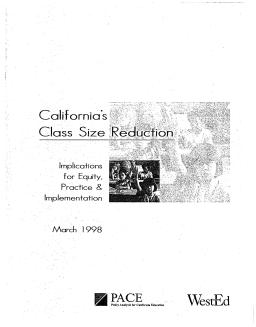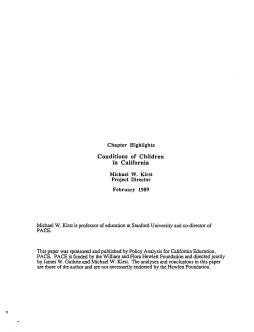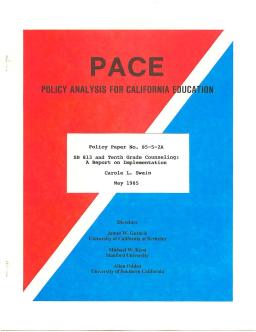Implications for Equity, Practice, and Implementation
Published
Summary
In 1996, CA launched a $1 billion class size reduction (CSR) initiative to improve early literacy. The initiative provides $800 per student to schools reducing class size to 20 or fewer in first, second, and/or third grade, and kindergarten. CSR was funded due to a state revenue surplus and the belief that smaller classes would enhance early literacy. CA ranked second to last in national reading tests in 1994, and class sizes averaged around 28.6 students per K-3 classroom. While educators and the public show enthusiasm, the success of CSR in enhancing academic achievement is yet to be seen.
Published
Summary
This study compares the post-secondary experiences of graduates from California Partnership Academies with their matched comparison groups. The findings show that Academy graduates are doing equally well as comparison students in the first year or two after graduation, indicating that Academy programs have not achieved higher graduation rates at the expense of lower success rates after high school. However, there may be more subtle differences between the two groups that are not detectable by simple measures.
Chapter Highlights
Published
Summary
This report provides social indicators to evaluate the quality of life for children in California, covering physical and mental health, safety, sexual behavior, academic achievement, and the settings and systems that serve children. Despite most children being healthier and better schooled than in the past, recent polls indicate concern about child-rearing and the likelihood of an expanding educational underclass. The report aims to offer a portrait of the quality of California's children, address gaps in available data, and provide limited policy recommendations.
A Report on Implementation
Published
Summary
Comprehensive school guidance programs attempt to address a range of student needs on personal, social, career, and academic dimensions. Many guidance and counseling programs, however, have suffered cutbacks in recent years even though students continue to be in need of guidance, and students themselves have expressed a desire for assistance.



